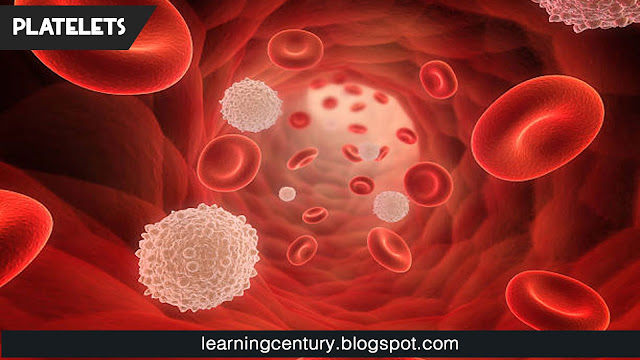Human
Blood & Its Composition
(Simple & Explanation Base Note)
(Simple & Explanation Base Note)
HUMAN BLOOD
In
human beings and many other animals, blood is a Red fluid which
circulates through blood vessels i-e
1) Arteries
2) Veins
&
3) Capillaries
and heart
INTRODUCTION:
1) Blood
is a type of connective tissue and is composed of two parts i-e
a.
Blood plasma
b.
Blood cells or cell
like bodies
2) PH
of human blood is 7.4 and the total weight of blood is about 1/12th
of our body weight.
a)
BLOOD
PLASMA
1)
If blood is taken in a
test tube and allowed to stand for a few minutes, a yellow colored liquid is
separated from the cells and cells like bodies.
2)
Cellular components
settle down and the pale yellow liquid remains at the top.
3)
This yellow-colored
material is called plasma.
4)
It constitutes about 55%
by volume of blood.
5)
It contains about 90%
water and 10% dissolved substances.
6)
Out of these
substances, about 7% are different types of proteins generally called plasma
proteins.
7)
0.9-1%
of
plasma is made of different inorganic salts, while 2% consist of food
materials, Hormones, Waste products, etc.
FUNCTIONS
OF BLOOD PLASMA
Following
are the various functions of blood plasma;
1)
Plasma keeps all the
tissues moist.
2)
Plasma of the blood
transports
a.
Nutrients
b.
Water
c.
Salts
d.
Hormones and
e.
Waste materials
3)
Plasma helps in
regulating body temperature.
4)
Small amount of oxygen
and most of the CO2 is carried by plasma.
5)
Plasma proteins
contain Albumins, which maintain osmotic pressure of blood.
6)
Important plasma
proteins called antibodies defend the body against pathogens.
7)
Another plasma
proteins called fibrinogen is responsible for blood clotting.
8)
When blood clots,
fibrinogen is separated from blood plasma, the rest of the blood is called serum.
b)
BLOOD
CELLS
Human blood contains
1.
Red Blood Cells (RBCs)
2.
White blood cells (WBCs)
3.
Platelets (Cell like
bodies)
Blood
cells make about 45% of blood by volume.
1. RED BLOOD CELLS (ERYTHROCYTES)
1)
RBCs are most numerous
of all the blood cells.
2)
RBCs are specialized cells,
95% of their cytoplasm is composed of Hemoglobin.
3)
Remaining 5% contains
enzymes other proteins and salts.
4)
It has been estimated
that a single RBC contains about 2 billion molecules of hemoglobin.
5)
RBC gives red color to
the blood due to the presence of Red pigment, hemoglobin.
6)
One cubic millimeter
of blood contains about 5 million RBCs.
7)
In humans, a mature RBC
is biconcave, rounded cell without a nucleus,
8)
Before and immediately
after birth, RBCs are formed in the liver and spleen.
9)
In adults, they are
formed in the red bone marrow of short bones i-e
a.
Sternum
b.
Ribs and
c.
Vertebrae
10)
The average life span of an RBC is about 120
days after which they are removed from the blood by spleen and liver.
11)
RBCs are red because
they contain a red protein, hemoglobin.
FUNCTIONS:
Hemoglobin carries Oxygen and a little amount of Carbon dioxide in the blood.
2) WHITE
BLOOD CELLS (LEUCOCYTES)
1)
White blood cells are colorless
as they do not contain any pigment.
2)
They are irregular in
shape and are nucleated.
3)
Each cubic millimeter
of blood contains about 7000 to 8000 WBCs.
4)
Their life span is
very short i-e from 7 hours to a maximum of 3 days, except for some
lymphocytes which stay for longer periods.
5)
There are five
different types of WBCs.
6)
They are part of the immune
system and defend our body against diseases.
7)
They circulate and are
transported to an area where the infection has developed.
8)
Some WBCs kill pathogens
(bacteria, viruses etc) by engulfing them.
9)
Some of them also
produce inflammation at the of infection, while some make antibodies
against pathogens.
10)
The increased number
of WBCs in the blood shows the level of infection in the body.
11)
WBCs die in the
process of killing the germs.
12)
The dead cells
accumulate and make the white substance called pus, seen at the infection
site.
HOW
IMMUNE SYSTEM WORKS
1)
We ingest thousands of
germs daily especially through our mouth and nose but still, we remain healthy.
2)
Thanks to WBCs which
engulf these disease-carrying agents and destroy them.
3)
In this effort, they
themselves are also destroyed, in this way these WBCs forms immune system of
our body.
4)
Disease starts when
the immune system is weak and germs are stronger and more in number.
3) PLATELETS (THROMBOCYTES)
1)
Platelets are not true
cells.
2)
They are fragments of
cytoplasm pinched off from certain bone marrow cells.
3)
Each cubic millimeter
of blood contains about 15,000 to 450,000 platelets.
FUNCTIONS:
1)
Platelets help in
blood clotting.
2)
When the blood vessels
are damaged, the blood starts oozing out, they gather at the site.
3)
They release
substances which convert plasma protein fibrinogen into the thread of insoluble
fibrin.
4)
These threads make a
mesh in which platelets and other blood
cells are entangled to make a clot and stop the blood flow from
the wounds.






Post a Comment